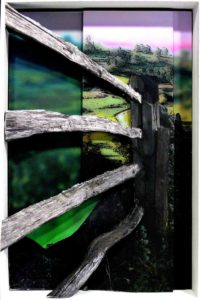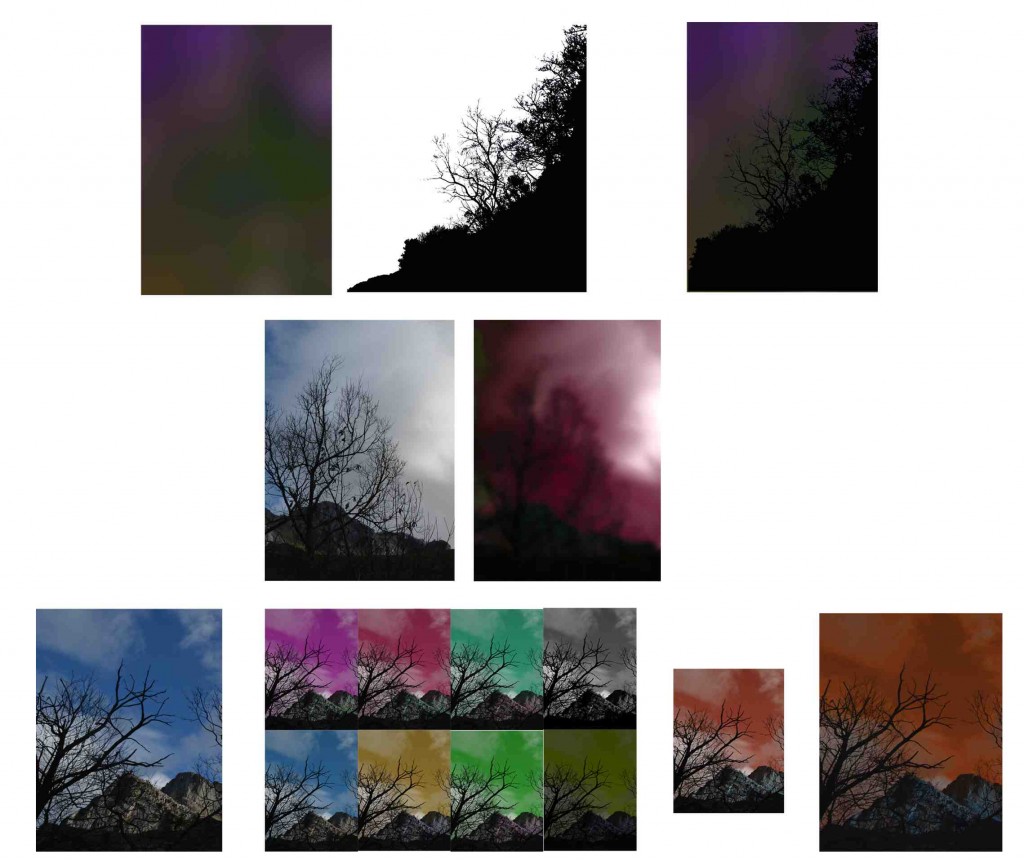Arte Santander ’14 Project – Spatial Distribution
Archaeology of a Landscape

Spatial Distribution:
- Fragmentation = Encapsulation in the same work of different moments, different states, different lights, different sensations
- Point of view = Low, to highlight the monumentality; high, to highlight magnificence; middle, natural
- Stratification = Differentiation through planes at different level, the states and moments of landscape (The same way as the Archaeology keeps uncovering different strata of a field looking for different epochs, using the stratification to delimit the different moments, sensations, suggestions, impressions, realities, memories.
- Cinematographical terms (foreground, background, long-shot, to define the present, the past and the future)
- Diagonals
- Perspective
- Vertical strips
- Horizontal extensions
Technical Resources:
- Digital impression
- Acrylic paint in its different states of pastiness or dilution
- Tempera
- Lacquers or transparent colours
- Chinese ink
- Materials of the landscape (leaves, sticks…)
- Supports: Hanne mule paper, paper for print making, onion paper, acetates and other planar surfaces.
Digital Resources:
- Transparencies = superposition of reality over memories
- Focus and Out of focus = Perception of temporary neatness and subjective of the term, through more or less out of focus.
- Complementary:
- Real light – investment of light (positive and negative, like change of condition, of stratum, of moment)
- Natural colour – Complementary colours (Utilising the opposite or complementary vision of colour to emphasize the temporary difference)

Next Page: Landscapes as…
Página anterior: Techniques

